Number four was unveiled last week to set a new kind of fever brewing, after briefly easing some of the pre-announcement tension. Carriers are tripping over themselves to secure deals, while customers have been forming mile-long virtual queues at stores already taking preorders.






Samsung Galaxy S4 official photos






Samsung Galaxy S4 official photos
Samsung Galaxy S4 at a glance:
- General: Optional 2G/3G/LTE connectivity
- Form factor: Touchscreen bar phone
- Dimensions: 136.6 x 69.8 x 7.9mm, 130 g
- Display: 4.99" 16M-color Super AMOLED HD capacitive touchscreen with a resolution of 1920 x 1080 pixels (441ppi)
- Chipset: Exynos 5410 Octa / Snapdragon 600
- CPU: 1.6 GHz Quad-core ARM Cortex-A15 and 1.2 GHz quad-core ARM Cortex-A7 / 1.9GHz Krait 300
- GPU: PowerVR SGX 544MP3 / Adreno 320
- RAM: 2GB
- OS: Android 4.2.2 (Jelly Bean)
- Memory: 16/32GB/64GB storage, microSD card slot
- Still camera: 13 megapixel auto-focus camera, face detection, touch focus and image stabilization, Dual Shot, Cinema Photo; 2MP front facing camera, video-calls
- Video camera: Full HD (1080p) video recording at 30fps
- Connectivity: Wi-Fi a/b/g/n/ac, Wi-Fi hotspot, Bluetooth 4.0, standard microUSB port with MHL features (TV Out, USB host), GPS receiver with A-GPS and GLONASS, 3.5mm audio jack, NFC, Infrared port
- Battery: 2600 mAh
- Misc: TouchWiz UI, Impressively rich video/audio codec support, built-in accelerometer, Smart stay and Smart rotation eye-tracking, Smart pause, Smart scroll, S Health, Air Gestures, humidity sensor, temperature sensor
There's little on the outside to suggest a massive upgrade over the Galaxy S III. On the other hand, the spec sheet implies a significant leap forward, improving on just about every aspect of the hardware and adding plenty of new software features. As usual, the truth is somewhere in between and our job today is to put a finger on it.
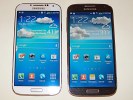



Samsung Galaxy S4 live photos
With the competition hardly sitting on their hands either, the Galaxy S4 is in for a fierce battle if it's to keep the Android crown in the Samsung trophy cabinet. The Sony Xperia Z is doing well to capitalize on the head start, while the HTC One has a wicked unibody design and no less impressive specs. A massive challenge indeed, but the Koreans have never been afraid of those.
Let's see how this one pans out - the hardware inspection begins right after the break.
Design and handling
The Samsung Galaxy S4 design is the part that has changed the least compared to the Galaxy S III. The smartphone uses the same Hyperglazed finish, on account of which the predecessor was bashed for feeling like a plastic toy rather than a flagship proper. And the Galaxy S4 will most likely receive the same criticism. After all, it doesn't come anywhere near the premium feel of a Sony Xperia Z, let alone the HTC One.
This is not to say though, the Samsung Galaxy S4 looks worse than its predecessor. The new texture gives it a more serious and stylish look, while the improvements to the design also contribute to the overall appeal. The slimmer bezels leave more space for the brilliant screen (more on it later), while the slimmer body has a more high-end vibe. We are positive too that many will appreciate a black paintjob.




The new pattern and the thinner bezel make the Galaxy S4 prettier than its predecessor
This is not to say though, the Samsung Galaxy S4 looks worse than its predecessor. The new texture gives it a more serious and stylish look, while the improvements to the design also contribute to the overall appeal. The slimmer bezels leave more space for the brilliant screen (more on it later), while the slimmer body has a more high-end vibe. We are positive too that many will appreciate a black paintjob.




The new pattern and the thinner bezel make the Galaxy S4 prettier than its predecessor
The size of the Galaxy S4 is a marvelous achievement, which should not be overlooked. The smartphone is the exact same height as its predecessor, but is 0.8mm narrower, 0.7mm slimmer and 3g lighter, while featuring a 0.2" larger screen, a higher-capacity battery that's still removable, and a host of new sensors and radios.
We guess Samsung has to share some of the credit with Corning and its new Gorilla Glass 3 that the Galaxy S4 employs. Based on a completely new glass composition, the third generation of the popular screen coating offers increased impact and scratch resistance, so Samsung could probably get away with using a slimmer shield, while maintaining the same level of protection. In fact the early tests are showing that the Galaxy S4 is actually harder to scratch than its predecessor.
At any rate, despite all the new features it introduces, the Samsung Galaxy S4 is easier to handle than the S III. It also feels more comfortable in the hand than the HTC One and that one only has a 4.7" display. Samsung has shown to competitors that a 5" screen doesn't necessarily make for an unwieldy handset.1080p Super AMOLED display is what geeks' dreams are made of
One of the most important updates that the Samsung Galaxy S4 brings is the new 5" Super AMOLED screen of 1080p resolution. While it does have a PenTile matrix, the 441 ppi pixel density makes sure you won't be able to spot the hated cross-hatch pattern.The defect wasn't easily spotted on the Galaxy S III either unless you looked from a closer-than-comfortable distance, which is to say it was as good as invisible to the naked eye. The design of the PenTile matrix has been changed too, so now green sub-pixels are twice as many as blue and red sub-pixels and the arrangement is changed. This however matters little to anyone not armed with a microscope.


Samsung Galaxy S4 and Sony Xperia Z display matrices compared
What you should take away from all this is that the final weak point of the Super AMOLED screens has been taken care of and the Galaxy S4 offers image quality like no other smartphone on the market. Its impressive contrast and almost perfect viewing angles make everything on the screen pop-up regardless of your view point.
The color saturation is beyond the reach of any LCD out there, which make even the dullest image appear remarkably vibrant. Still, if you are not a fan of the oversaturated look of the AMOLEDs Samsung gives you the option to tune down the saturation to more natural levels and enjoy the best of both worlds.
The brightness levels of the Samsung Galaxy S4 is slightly higher than the rest of the company's AMOLED displays, which is to say not very high. However, due to the low reflectivity this doesn't affect outdoor performance.
| Display test | 50% brightness | 100% brightness | ||||
| Black, cd/m2 | White, cd/m2 | Black, cd/m2 | White, cd/m2 | |||
| Samsung I9500 Galaxy S4 | 0 | 201 | ∞ | 0 | 404 | ∞ |
| Samsung I9300 Galaxy S III | 0 | 174 | ∞ | 0 | 330 | ∞ |
| HTC Butterfly | 0.14 | 173 | 1200 | 0.45 | 501 | 1104 |
| Sony Xperia Z | - | - | - | 0.70 | 492 | 705 |
| Oppo Find 5 | 0.17 | 176 | 1123 | 0.51 | 565 | 1107 |
| HTC One X | 0.15 | 200 | 1375 | 0.39 | 550 | 1410 |
| Nokia Lumia 920 | - | - | - | 0.48 | 513 | 1065 |
| Google Nexus 4 | 0.22 | 314 | 1447 | 0.45 | 608 | 1341 |
| LG Optimus G | 0.14 | 197 | 1445 | 0.33 | 417 | 1438 |
| Apple iPhone 5 | 0.13 | 200 | 1490 | 0.48 | 640 | 1320 |
Of course, Nokia showed that a brighter AMOLED can do even better in direct sunlight, but the gain isn't dramatic. We'll make sure to do a sunlight legibility test for the review and find out all about that.
Controls
Samsung has a bunch of new sensors scattered around the Galaxy S4's body, but the general layout of controls is largely unchanged.
Below the display you get the same three keys as on the Galaxy S III - capacitive Menu and Back buttons and a regular press Home key.
There's some extra functionality upon a long press too - the Menu key handles Google Now, while the Home key brings up the task switcher. Pressing and holding the back button brings the side bar for the Multi-window feature (if it's enabled) and if you click the home key twice the Samsung S voice virtual assistant kicks in.
Above the display we have the earpiece, as well as a bunch of sensors. The traditional ambient light and proximity sensors are joined by an IR gesture sensor, which enables the cool Air gestures in applications such as the web browser and music player. There's also a 2.1 megapixel front-facing camera for video-calls and a status LED up there.
The left side of the Samsung Galaxy S4 features the volume rocker, while the power/lock key is on the right. Unfortunately, despite the proper camera upgrade that the Galaxy S4 got, its flagship is missing a dedicated camera key.
The top of the Galaxy S4 features the 3.5mm audio jack, the secondary microphone and the IR blaster that allows you to use the smartphone as a remote control for your home appliances. There's also a remote control app with a pretty rich database preinstalled, so the functionality is available out of box.The microUSB port at the bottom is used for both data connections and charging. Not only does it support USB host but it also comes with support for the new MHL 2.0, enabling 3D 1080p output and TV connections without an external power source. Previously you had to plug in your charger in the adapter as well, but the Galaxy S4 gets rid of that extra requirement.
The other thing of interest at the bottom is the primary microphone.
The back of the Samsung Galaxy S4 is where the 13 megapixel FullHD-capable camera lens is located. As on the Galaxy S III the LED flash is right beside it, but the loudspeaker grille has been moved to the bottom left edge of the device.
Removing the battery cover reveals the microSIM slot, the nicely upgraded 2600 mAh removable battery and the microSD card slot. We are yet to see what kind of difference the extra 500 mAh make, considering the higher resolution screen and the more power-hungry chipset.
Updated user interface
The Samsung Galaxy S4 comes with Android 4.2.2 Jelly Bean - the latest release of the Google platform available at the moment - and a laundry list of new TouchWiz features. The Galaxy S4 combines the best of both worlds and while it seems familiar, there's plenty below the surface.
We start with the lockscreen, which features the new lockscreen widgets introduced with Android 4.2, though Samsung fiddled with them a bit. The default lockscreen shows the time along with a personal message overlaid on beautiful photos pulled from TripAdvisor (with text at the bottom about where the photo was taken).
The water ripples have been replaced by a lens flare effect though you can switch back to the old one or disable it all together.
The lockscreen has multiple panes, each containing one widget. The page to the right of the default one is special and can either be a list of favorite apps (the default TouchWiz setting) or a shortcut for the camera (as in pure Android).
The pages to the left contain different widgets - email, Google Now, Messaging, music player, Yahoo! Finance and News and you can download apps from the Play Store that add new widgets.
There are no app shortcuts at the bottom of the screen by default - the Favorite Apps widget to the right has taken over that role, but you can enable them and have up to five easily accessible shortcuts.
One cool option for those who use more secure lockscreens (PIN, Pattern, etc.) is the Auto unlock zone feature. You can add several "home" Wi-Fi networks and the lockscreen will be disabled when the Galaxy S4 hooks up to one of them. This way you can have a secure PIN lockscreen outside and a quick unlock at home or the office.
Another nice trick is the Quick glance option we first saw on the Galaxy Note II. It uses the proximity sensor to detect you reaching for the device and it lights up the screen that shows the time, missed call and message counters, battery charge and music track info.
The homescreen looks mostly the same, though there are a number of tweaks that make it easier to use, especially in the notification area.
At the top there are five (or eight in landscape mode) toggles that can quickly enable and disable features. There are more than five toggles, of course, you can swipe horizontally to get to the others. Or you can tap the new button that reveals a grid of all the shortcuts, 20 in total. You can rearrange this grid (the top row toggles are always visible). A two finger swipe directly opens the grid of toggles.
Below the toggles is the display brightness slider complete with an Auto toggle. You can disable this slider to get more room for notifications.
The notifications themselves have not changed - they can be expanded to reveal more info and collapsed to save space or dismissed with a sideways swipe. Sometimes they also have helpful buttons on them like "Call back" and "Send SMS" on a missed call notification.
You can pinch zoom to get into the overview mode of all homescreen panes. There can be up to 7 and you can easily add, remove and rearrange panes from here. One pane is marked as "home", that's the one you go to when you press the Home button.
The app drawer hasn't changer really since the early days of Nature UX. The app shortcuts are presented as a customizable grid, alphabetized grid or list and you can hide shortcuts (good for bloatware you can't uninstall), view only downloaded apps, uninstall apps and add folders. Widgets are in a separate tab in the drawer.
There's a useful but almost invisible change to the way you drag out shortcuts and widgets to the homescreen - there's a list of small thumbnails of all the homescreen panes with the silhouettes of the widgets there so you can judge how much space is available on each pane.
The App switcher interface is unchanged - there's a list of thumbnails of all the recent apps, apps can be swiped to dismiss and there are three buttons at the bottom, Task manager, Google Now and Kill all apps.
The Galaxy S4 comes with Multi-window. It runs two apps side by side on the screen. You can adjust the division line giving one app more space. Only compatible apps can be used with Multi-window, for now that means mostly the ones that come preinstalled on the phone.
Air and Motion gestures, Smart Screen
The Samsung Galaxy S4 comes with a number of advanced features enabled by the powerful hardware and dedicated sensors.
The first is Air View, which debuted on the Galaxy Note II and worked with the S Pen. There's no S Pen on the Galaxy S4, or a need for it - the phone can detect your finger hovering over the screen.
This enables information preview (e.g. SMS text, calendar entry text and so on), previewing videos just by pointing to a spot in the timeline, the next track in the music player by hovering over the next button (works with previous button too), previewing folders, speed dial contacts, and magnifying links in web pages. Air view detects fingers 1cm / 0.5" away from the screen, so there's no danger of accidentally tapping the screen when you wanted to use Air View instead.
Another set of "air" features are the Air Gestures. Quick Glance is one of them, but there's more. The rest of the air commands are triggered by waving your hand over the Galaxy S4.
You can use this to scroll web pages in the browser (vertical waves), switch between tabs (horizontal waves), move between tracks in the music player and photos in the gallery, accept a call and move app shortcuts and S Planner events.
Air Gestures can detect your hand up to 7cm (just under 3") and might prove useful in some situations. Note that only the native apps support them, third party apps will not work with them (even Chrome that comes preinstalled on the phone).
The familiar Smart Stay and Smart Rotate features are enabled too. Stay prevents the screen from locking as long as the front-facing camera can see your face (great for reading) and Rotate uses the orientation of your face rather than accelerometer info to decide how to rotate the screen.
Smart Scroll is one of the two new features - it allows you to scroll up and down by tilting the phone as long as you're looking at the screen. In effect, it's an accelerometer based scroll that prevents accidental scrolling by making sure you're paying attention to the screen.
The second new feature is simpler and more useful - Smart Pause. While watching a video, it uses the front-facing camera to track your face and will automatically pause the video when you look away. Look back and the screen and the playback continues.
Then there are a number of motion gestures, which are not exactly new. There's direct call (dial the contact whose info you're currently viewing by lifting the phone up to your ear), smart alert (makes the phone vibrate when you pick it up if there are missed events), zooming and panning in the gallery, a shake of the phone to refresh the list of Bluetooth devices and muting alarms or pausing music playback by putting the phone face down.
You can also pause the music player by putting your palm on the screen. A palm swipe takes a screenshot.
Synthetic benchmarks
The Samsung Galaxy S4 we're previewing is the one with the Snapdragon 600 chipset. We're as curious as you are to know about the Exynos 5 Octa, but we'll have to wait for wider benchmark support anyway.
Still, four Krait 300 cores clocked at 1.9GHz with 2GB of RAM and Adreno 320 GPU should offer top notch performance.
The Galaxy S4 edges out the HTC One and LG Optimus G Pro in single-threaded (Benchmark Pi) and multi-threaded (Linpack) performance, both these handsets use the same chipset but with the CPU clocked at 1.7GHz.
Benchmark Pi
Lower is better
- Samsung Galaxy S4134
- LG Optimus G Pro147
- HTC One151
- Sony Xperia Z264
- HTC Butterfly266
- Oppo Find 5267
- HTC One X+280
- LG Optimus G285
- Samsung Galaxy Note II305
- HTC One X (Tegra 3)330
- LG Optimus 4X HD350
- Samsung Galaxy S III359
- Meizu MX 4-core362
- Nexus 4431
Linpack
Higher is better
- Samsung Galaxy S4749
- LG Optimus G Pro743
- HTC One646
- Sony Xperia Z630
- HTC Butterfly624
- LG Optimus G608
- Oppo Find 5593
- Samsung Galaxy Note II214.3
- Nexus 4213.5
- Meizu MX 4-core189.1
- HTC One X+177.7
- Samsung Galaxy S III175.5
- HTC One X160.9
- LG Optimus 4X HD141.5
Geekbench 2 is a cross-platform benchmark, which allows us to compare the Galaxy S4 against the iPhone 5 and the difference is double. The HTC One and Optimus G Pro lag behind the S4 too, though we should not that they are using an older version of Android (4.1.2 vs. 4.2.2).
Geekbench 2
Higher is better
- Samsung Galaxy S43227
- LG Optimus G Pro3040
- HTC One2708
- Sony Xperia Z2173
- HTC Butterfly2143
- Samsung Galaxy S III1845
- LG Optimus G1723
- LG Optimus 4X HD1661
- iPhone 51601
Moving on to compound benchmarks, AnTuTu puts the Galaxy S4 on top while Quadrant found basically no difference between the S4 and the G Pro (but the HTC One somehow lagged behind).
AnTuTu
Higher is better
- Samsung Galaxy S423607
- HTC One22678
- Sony Xperia Z20794
- LG Optimus G Pro20056
- HTC Butterfly19513
- Samsung Galaxy S III15547
- Oppo Find 515167
Quadrant
Higher is better
- LG Optimus G Pro12105
- Samsung Galaxy S412028
- HTC One11746
- Sony Xperia Z8075
- HTC One X+7632
- LG Optimus G7439
- Oppo Find 57111
- HTC One X5952
- Samsung Galaxy Note II5916
- Samsung Galaxy S III5450
- Meizu MX 4-core5170
- Nexus 44567
Now let's look at the GPU benchmarks. We ran GLBenchmark 2.5 in 1080p off-screen mode, which is also the native screen resolution for the flagships. The Galaxy S4 came out ahead of the HTC One here, which leads us to suspect that the GPU has been overclocked too.
The S4 also topped the Epic Citadel chart, though it's getting too close to the software 60fps limit to show much of a difference. Still, this benchmark uses Unreal Engine, which is sometimes used in high-end 3D mobile games and shows real-world performance.
GLBenchmark 2.5 Egypt (1080p off-screen)
Higher is better
- Samsung Galaxy S440
- HTC One34
- Asus Padfone 231
- Oppo Find 530
- Sony Xperia Z29
- LG Optimus G29
- HTC Butterfly27.9
- Apple iPhone 527
- Nexus 426
- Samsung Galaxy Note II17
- Samsung Galaxy S III15
- HTC One X+12
- HTC One X9
Epic Citadel
Higher is better
- Samsung Galaxy S457
- HTC One56.4
- Sony Xperia Z55.6
- LG Optimus G Pro54.2
- Nexus 453.9
- Asus Padfone 253.4
- LG Optimus G52.6
- Samsung Galaxy S III41.3
- Oppo Find 538.6
Finally, JavaScript and HTML5 performance proved good but not as good as Samsung managed with the Galaxy Note II. We used the Android Browser for the test rather than Chrome, which also comes preinstalled.
SunSpider
Lower is better
- Samsung Ativ S891
- Apple iPhone 5915
- Nokia Lumia 920910
- Samsung Galaxy Note II972
- HTC One X+1001
- LG Optimus G Pro1011
- Motorola RAZR i XT8901059
- Samsung Galaxy S41089
- HTC One1124
- Samsung Galaxy S III1192
- Meizu MX 4-core1312
- Sony Xperia Z1336
- LG Optimus G1353
- HTC Butterfly1433
- Nexus 41971
- Oppo Find 52045
Vellamo
Higher is better
- Samsung Galaxy Note II2418
- HTC One2382
- Sony Xperia Z2189
- HTC One X (Tegra 3)2078
- Samsung Galaxy S42022
- HTC Butterfly1866
- Oppo Find 51658
- Samsung Galaxy S III1641
- LG Optimus 4X HD1568
- LG Optimus G1522
- Meizu MX 4-core1468
- Nexus 41310
Camera
The Samsung Galaxy S4 comes with a 13MP main camera and a 2MP secondary camera, both of which can be used at the same time.
The camera interface is a departure from the previous versions, which were based on the Galaxy S II interface. This one is based on the Galaxy Camera interface instead.
That means there are two virtual shutter keys (still and video) on the right, plus a mode button. Modes are picked from a carousel with descriptive images and text. At the bottom there's an up arrow for color effects - the cool thing is that all effects do a live preview, Samsung is really showing off the chipset's processing power here.
In the upper left corner, there are a couple of quick settings plus an arrow to reveal more options. One of the more prominent settings here is the dual shot mode, which snaps a photo with both cameras and presents them picture-in-picture style (think video call). You can move and resize the image from the front-facing camera that's taking a photo of you.
As for the different camera modes, it's a collection of some of the best camera features on current flagships.
One of the rarest modes is 360 photo. That's basically the same as Photo Sphere - it creates a spherical panorama like you see in Google Street View. Nexus devices aside, the LG Optimus G Pro has such a mode. There's a regular panorama mode as well.
Then there's Sound & shot - it snaps a photo and records a few seconds of background audio, which really gives photos an ambience. If you prefer to have motion in your shots instead of audio, you can create cinemagraphs with the Cine Photo mode.
There's also the Eraser mode, which snaps a burst of photos and automatically detects moving objects and removes them. This is great for popular tourists attractions as it's quite difficult to get a photo of those without at least one person walking into your shot. This is similar to Scalado based tech in Nokia Lumia phones and the HTC One.
Another mode is called Drama, which is basically the same as the HTC One's Sequence shot. It takes multiple photos of a moving subject and creates multiple "clones" of it.
HDR mode is available under the name Rich tone and there is a dedicated Sports mode and Night mode. You can enable auto night mode detection if you don't want to toggle it manually.The familiar Best Photo and Best Face are, of course, available. They snap multiple photos and pick out the best one. In the case of Best Face, each face can be adjusted individually. So is Beauty Face, which attempts automatic photo retouching to remove "facial imperfections".
The Samsung Galaxy S4 unit we're using for this preview hasn't got its hardware and software finalized, so we'll leave the image quality discussion for the review. Still, we snapped a few comparison shots between the Galaxy S4 and the Sony Xperia Z to give you a feel for the image quality.
We also shot sample videos with the Galaxy S4 and the Xperia Z. The third clip shows the dual recording video mode.
S Apps and other cool apps
The Samsung Galaxy S4 comes with a number of advanced features and apps that are exclusive for now, but will make their way to older devices via updates.One of the coolest apps is called Group Play. It shares various multimedia across multiple devices in the same room but unlike DLNA it's interactive.
One use case is to play a music track on the Samsung Galaxy S4 and use multiple phones as speakers. You can pick the role of each phone (e.g. left channel, right, all the way up to surround sound). This way you can control the music from one phone but use the loudspeakers of all.
Of course, the other phones will need to support Group Play - the phones communicate over Wi-Fi (your Galaxy S4 becomes a hotspot that others connect to) and the pairing is done via NFC.
More useful are the options to share a picture or a document - you can have the same picture appear on everyone's phone and you can draw over it if you need to highlight a certain element of the image.
Finally, perhaps the coolest feature of Group Play is that it allows for multiplayer games to be played on several phones simultaneously. Of course, only supported games work - there was a poker and puzzle games preloaded on our unit with Asphalt7 and Gun Bros offered as other games that support Group Play multiplayer.
Moving on, there's S-Link, another way to share content between devices. Unlike Group Play, S-Link is intended for personal use. You can link the phone to a computer that is synced with Dropbox, SkyDrive or SugarSync and remotely access content on that device.
Then there's S Voice - it has all the features we're already familiar with, but also comes with a car mode that simplifies the interface and makes text bigger. S Voice can be used to initiate a call, dictate text, play music, open an app, change a setting, make a memo (including voice memo), add a reminder, schedule an event, set an alarm or timer, check the weather, do a search on the internet, look for local listings (e.g. nearby restaurants) and even get an answer to a question.
S Voice does duplicate parts of Google Now, but it adds a lot of new functionality (it even has more features than Siri). Some of these features are available outside of S Voice too, so you can set the Galaxy S4 to answer a call or snooze an alarm by voice commands even when S Voice isn't running. The problem with S Voice is not nearly as fast or as accurate at recognizing your speech input as Now.S Translator will help travelers - it can translate between two languages using either typed text or by using speech recognition. It can read out the resulting translation too, if you don't thing your Korean accent can cut it. S Translator supports all the widely-spoken languages - English, Chinese, Spanish, Portuguese, French, German, Italian, Japanese and, of course, Korean.
This app can work together with Photo Reader, which employs Optical Character Recognition so you can just snap a photo of the text instead of having to type it in (which can be quite a challenge, imagine typing Chinese if you've never studied it).
On our Samsung Galaxy S4 unit, the Cento OnTV was the one that works with the built-in IR emitter on the top of the phone. The app starts out by asking your zip code and pulls up a number of TV service providers in that area.
This is so that the app can show you a TV guide with shows currently on or upcoming on the channels offered by the service provider. You can read a description of the show, check out its popularity in up/down votes (and vote yourself, of course) and comments. You can also set a reminder for a show.
Anyway, the key element of the app is the IR remote control functionality. The app can control TVs, DVD and Blu-ray players, streaming media players and air conditioners. Devices are organized by rooms.
One thing we really liked about the app is that it knows some home setups are messy - some let you change channels with the TV remote, others require you to use the set-top box remote for that. Same for the audio, you might be using the TV to output the sound or an AV receiver. The app will ask about your setup and present a unified remote control interface even if you have multiple hardware remotes to control all the devices.
TK's Blog | Free Forex Signals | Infotech Arena Tech News |



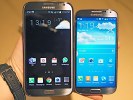















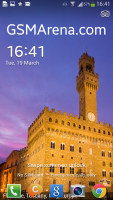



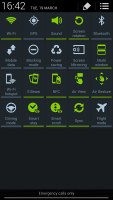



















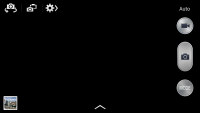






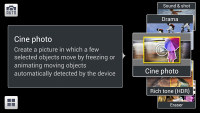












































No comments:
Post a Comment